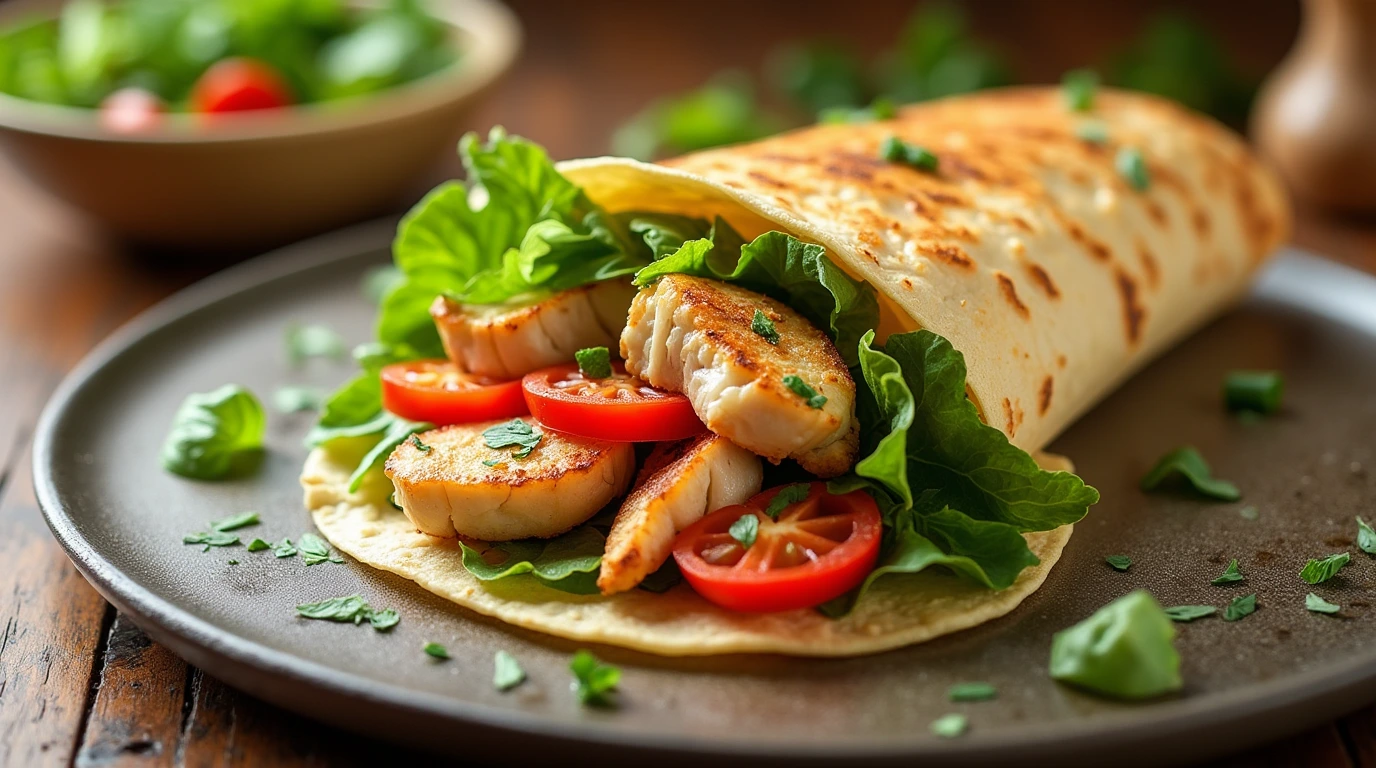Enjoy a flavorful and affordable seafood value salad wrap. Learn how to make this easy, satisfying meal.
Discover the Deliciousness of a Seafood Value Salad Wrap
A seafood value salad wrap is a fantastic and budget-friendly way to enjoy seafood. It combines a variety of flavorful seafood with fresh vegetables and a tasty dressing, all wrapped up in a convenient wrap. This is a perfect option for a quick lunch, a light dinner, or even a picnic. Moreover, it’s easy to customize. This makes it a versatile and delicious choice for any meal. This article will guide you through creating a great seafood value salad wrap.
Print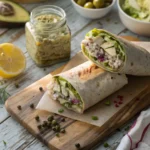
Seafood Value Salad Wrap: Quick & Tasty
- Total Time: 15 min
- Yield: 4 wraps 1x
Description
A light, budget-friendly seafood salad wrap made with imitation crab, crunchy veggies, and a creamy dressing—perfect for a quick lunch, picnic, or protein-packed snack.
Ingredients
8 oz imitation crab meat (or other budget-friendly seafood)
1/4 cup mayonnaise
1 tbsp sour cream or plain yogurt
1 tsp lemon juice
1/2 tsp Old Bay seasoning or seafood spice blend
1/4 cup finely chopped celery
2 tbsp finely chopped red onion
1 tbsp chopped fresh parsley (optional)
Salt and pepper to taste
4 large flour tortillas or wraps
Lettuce leaves or shredded lettuce for filling
Instructions
1. In a mixing bowl, shred or chop the imitation crab meat into bite-sized pieces.
2. Add mayonnaise, sour cream, lemon juice, Old Bay seasoning, celery, red onion, and parsley.
3. Stir well until fully combined. Taste and adjust seasoning with salt and pepper.
4. Lay out tortillas and place a layer of lettuce down the center of each.
5. Spoon seafood salad mixture evenly across the wraps.
6. Fold in sides and roll up tightly to form wraps.
7. Slice in half and serve immediately or chill until ready to eat.
Notes
For extra crunch, add diced cucumber or bell pepper.
These wraps hold up well in lunchboxes—wrap in foil or parchment to keep fresh.
Substitute Greek yogurt for a lighter version or add a dash of hot sauce for kick.
- Prep Time: 15 min
- Cook Time: 0 min
- Category: Main Dish
- Method: No-Cook
- Cuisine: American
Nutrition
- Serving Size: 1 wrap
- Calories: 310
- Sugar: 3g
- Sodium: 680mg
- Fat: 18g
- Saturated Fat: 4g
- Unsaturated Fat: 12g
- Trans Fat: 0g
- Carbohydrates: 26g
- Fiber: 2g
- Protein: 12g
- Cholesterol: 25mg
Keywords: seafood salad wrap, budget lunch, imitation crab wrap, quick seafood recipe
Why Choose a Seafood Value Salad Wrap?
Firstly, it’s incredibly delicious. The combination of seafood and fresh veggies creates a satisfying flavor. Secondly, it’s versatile. You can use different types of seafood. Additionally, it’s budget-friendly. This makes it a great choice for those looking for affordable meals. Finally, it’s quick to make. Therefore, it’s perfect for busy weeknights or a simple lunch. Thus, it is a great option for a variety of needs.
Understanding the Components of the Wrap
Before diving into the recipe, let’s explore the key components of a seafood value salad wrap. These include the seafood, the vegetables, the dressing, and the wrap itself. Each component plays an essential role in the overall taste and texture of the wrap. Therefore, understanding each one helps create the best possible seafood value salad wrap.
Essential Ingredients for a Seafood Value Salad Wrap
Now, let’s gather the ingredients. This section will guide you through what you need to create a perfect seafood value salad wrap.
Choosing Your Seafood
Firstly, choose your seafood. Canned tuna, crab, or shrimp are excellent options. They are affordable and readily available. If you prefer fresh, cook it before adding it to the salad. You may use leftover cooked seafood as well. Therefore, choose your seafood based on budget and preference.
- Canned tuna: A budget-friendly and convenient option.
- Canned crab: Adds a delicate and sweet flavor.
- Canned shrimp: Versatile and adds a nice texture.
- Fresh or leftover seafood: Great when available, but remember to cook before using.
Fresh Vegetables
Secondly, the vegetables are very important. They add flavor, texture, and nutrients. Lettuce, cucumbers, tomatoes, and red onions are great choices. Furthermore, consider bell peppers, carrots, or avocado. Therefore, use a variety of fresh, colorful vegetables for the best results.
- Lettuce: Provides a crisp base.
- Cucumbers: Adds a refreshing and cool element.
- Tomatoes: Provides sweetness and juiciness.
- Red Onions: Add a sharp and savory flavor.
- Bell peppers, carrots, or avocado: Great options for extra nutrients and flavor.
The Dressing
Thirdly, the dressing is crucial. It brings all the flavors together. Mayonnaise, Greek yogurt, or vinaigrette-based dressings are good options. Consider adding lemon juice or herbs for extra flavor. Therefore, select a dressing that complements your seafood choice.
- Mayonnaise: A classic and creamy base.
- Greek yogurt: A lighter alternative to mayonnaise.
- Vinaigrette-based dressings: Offer a tangy and zesty flavor.
- Lemon juice or herbs: To enhance the taste of the dressing.
The Wrap
Fourthly, the wrap itself is important. Flour tortillas, whole wheat wraps, or even lettuce wraps work well. Choose your wrap based on your dietary needs and taste. Also, make sure it’s large enough to hold all of the fillings. Therefore, select a wrap that is suitable for your preferences.
- Flour tortillas: A classic and versatile option.
- Whole wheat wraps: A healthier choice with added fiber.
- Lettuce wraps: A low-carb alternative.
- Select a large wrap to accommodate all your fillings.
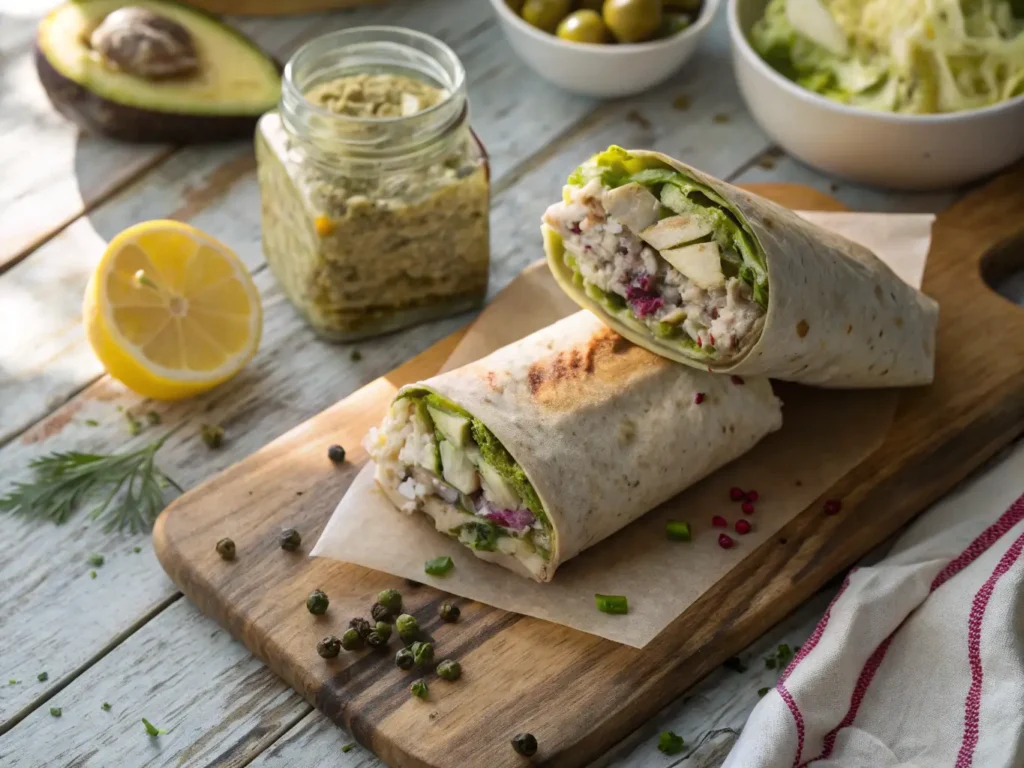
Step-by-Step Guide to Making Your Seafood Value Salad Wrap
Now, let’s walk through the steps of creating your seafood value salad wrap. Follow these instructions carefully for the best results.
Preparing the Seafood
Firstly, prepare your seafood. If using canned seafood, drain it well. If using cooked shrimp or other cooked fish, ensure it is cooled. Flake any larger pieces into smaller, more manageable sizes. Therefore, properly preparing the seafood is vital.
- Drain canned seafood well.
- Ensure cooked seafood is cooled.
- Flake large pieces into smaller sizes.
Chopping the Vegetables
Secondly, prepare your vegetables. Wash and chop them into small, bite-sized pieces. The size of the vegetables should complement the size of the seafood. Therefore, uniform sizes ensure good texture and flavor.
- Wash all vegetables thoroughly.
- Chop vegetables into small, bite-sized pieces.
- Ensure sizes are uniform.
Mixing the Salad
Thirdly, combine the seafood and vegetables in a medium bowl. Add your chosen dressing. Mix everything gently until it’s evenly coated. Avoid overmixing, as this can make the salad mushy. Therefore, gentle mixing is best.
- Combine seafood and vegetables in a medium bowl.
- Add your chosen dressing.
- Mix everything gently until evenly coated.
Assembling the Wrap
Fourthly, it’s time to assemble your wrap. Lay your chosen wrap on a flat surface. Place the seafood salad mixture in the center. Avoid overfilling the wrap. Fold in the sides, then roll it up tightly. Therefore, proper wrapping prevents spills.
- Lay your wrap on a flat surface.
- Place the seafood salad mixture in the center.
- Fold in the sides, then roll up tightly.
Tips for Making the Best Seafood Value Salad Wrap
Here are some tips for enhancing your seafood value salad wrap. Follow these guidelines for optimal results.
Fresh Ingredients are Best
Firstly, fresh ingredients make a big difference. Fresh vegetables will add better flavor and texture. Using high-quality seafood will also improve taste. Consequently, the freshest ingredients always lead to the best result. Therefore, prioritize fresh options whenever possible.
- Fresh vegetables add better flavor and texture.
- Use high-quality seafood for improved taste.
- The freshest ingredients lead to the best results.
Don’t Overfill the Wrap
Secondly, avoid overfilling your wrap. Overfilling can cause it to tear or be difficult to eat. Instead, use a moderate amount of filling. Therefore, control the amount of filling to prevent spills.
- Avoid overfilling to prevent tearing.
- Use a moderate amount of filling.
- Overfilling makes the wrap difficult to eat.
Use the Right Dressing
Thirdly, choose the right dressing for your seafood value salad wrap. A dressing that complements your chosen seafood and vegetables is important. Also, consider the consistency of the dressing. Some dressings may make the wrap soggy. Therefore, select a dressing that enhances your meal.
- Choose a dressing that complements your seafood and vegetables.
- Consider the consistency of the dressing.
- Some dressings can make the wrap soggy.
Wrap It Tightly
Fourthly, ensure that you wrap it tightly. A tightly wrapped wrap will hold its shape better. It will also be easier to eat. Therefore, wrapping it well helps it stay together.
- Wrap tightly to hold the shape.
- Tightly wrapped wraps are easier to eat.
- Proper wrapping helps keep the ingredients intact.
Serve Immediately
Fifthly, for the best flavor, serve it immediately. This will prevent the wrap from becoming soggy. Enjoy it fresh for the most enjoyable experience. Thus, immediate serving ensures optimal quality.
- Serve immediately to prevent sogginess.
- Enjoy fresh for the best flavor.
- Freshly made wraps offer the most enjoyable experience.
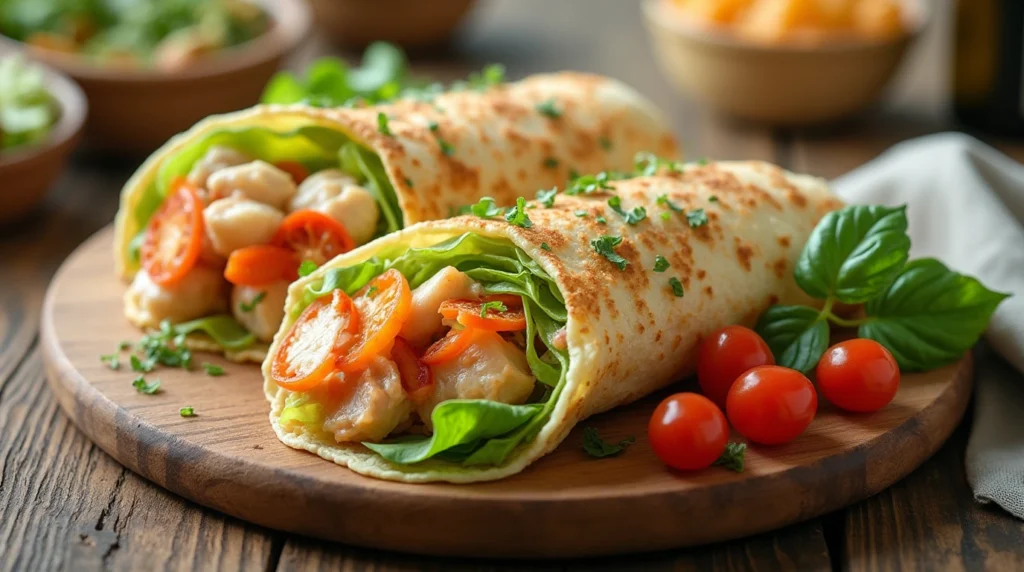
Variations of the Seafood Value Salad Wrap
Now, let’s explore some delicious variations of the seafood value salad wrap. These variations offer exciting twists on this classic wrap.
Spicy Seafood Value Salad Wrap
Firstly, consider making a spicy seafood value salad wrap. Add a dash of hot sauce to your dressing. Use jalapeños or a pinch of red pepper flakes for extra heat. Furthermore, you can use a spicy mayonnaise or sriracha mayo. Therefore, customize the spice level to your preference.
- Add hot sauce to the dressing.
- Use jalapeños or red pepper flakes for extra heat.
- Use spicy mayonnaise or sriracha mayo.
Mediterranean Seafood Value Salad Wrap
Secondly, create a Mediterranean-style wrap. Use feta cheese, Kalamata olives, and sun-dried tomatoes. Add a lemon-herb vinaigrette for dressing. Furthermore, add hummus for added creaminess. Thus, you can create a unique and tasty wrap.
- Add feta cheese, Kalamata olives, and sun-dried tomatoes.
- Use a lemon-herb vinaigrette for dressing.
- Add hummus for extra creaminess and flavor.
Asian-Inspired Seafood Value Salad Wrap
Thirdly, create an Asian-inspired seafood value salad wrap. Add shredded carrots, cucumbers, and bean sprouts. Use a peanut or sesame-ginger dressing. Furthermore, consider adding some crunchy noodles. Thus, these ingredients create a delightful flavor profile.
- Add shredded carrots, cucumbers, and bean sprouts.
- Use a peanut or sesame-ginger dressing.
- Add crunchy noodles for extra texture.
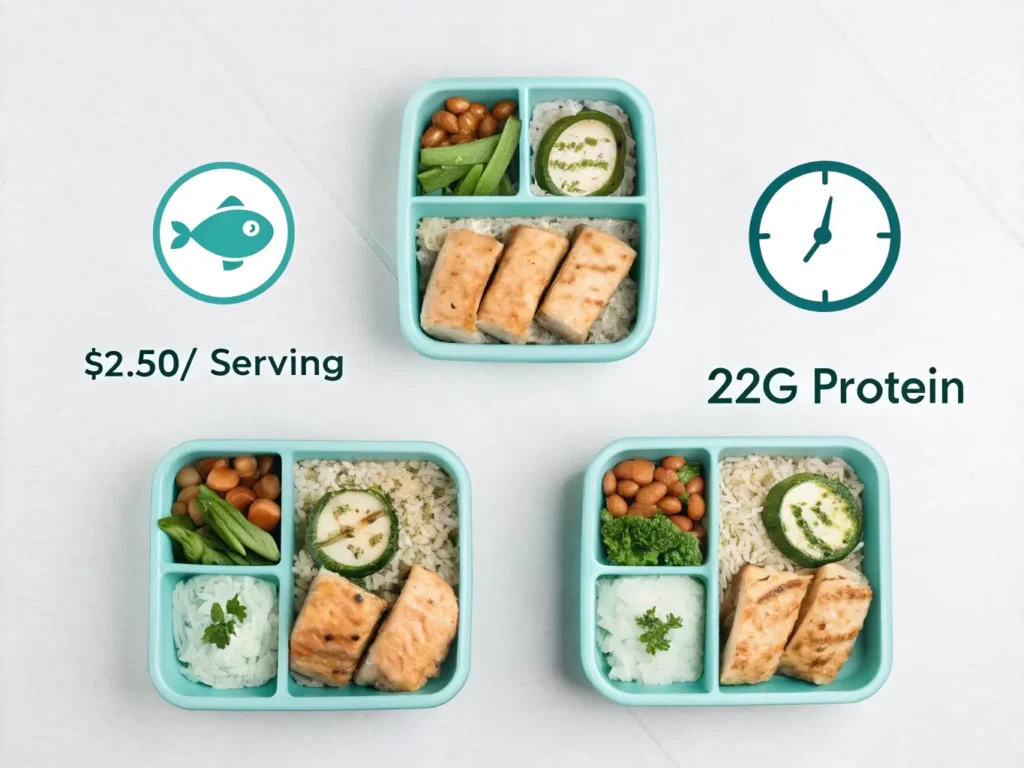
Using Different Seafood Options
Fourthly, explore different types of seafood. Use smoked salmon, cooked crab meat, or even sardines. Therefore, using various types of seafood will provide new flavor experiences. Thus, feel free to experiment with new flavors.
- Use smoked salmon for a richer flavor.
- Try cooked crab meat for a delicate taste.
- Explore sardines for a unique flavor profile.
Vegetarian Seafood Value Salad Wrap
Fifthly, even if it is seafood value salad wrap, consider a vegetarian option. Use hearts of palm or marinated artichoke hearts as a seafood substitute. Therefore, this provides options for all dietary preferences.
- Use hearts of palm as a seafood substitute.
- Try marinated artichoke hearts as a flavorful option.
- Provide a variety of options for all preferences.
Storing and Serving Your Seafood Value Salad Wrap
Let’s discuss how to best serve and store your seafood value salad wrap. Proper storage ensures freshness.
Serving Suggestions
Firstly, serving suggestions matter. Serve the wraps whole or cut in half. They are great for picnics or lunch on the go. You can pair them with a side of chips or fruit. Therefore, you have multiple options for serving your wraps.
- Serve whole or cut in half.
- They are perfect for picnics or lunch on the go.
- Pair them with a side of chips or fruit.
Storing Leftovers
Secondly, proper storage ensures freshness. Store the wraps in an airtight container. Refrigerate for up to 24 hours. However, it’s best to consume them as soon as possible. Therefore, prompt consumption is ideal.
- Store wraps in an airtight container.
- Refrigerate for up to 24 hours.
- Best to consume them as soon as possible for optimal quality.
Making It Ahead
Thirdly, you can prepare components ahead of time. You can chop the vegetables and prepare the seafood the day before. However, combine them just before serving. This will prevent the wrap from becoming soggy. Therefore, preparing components ahead saves time.
- Chop vegetables and prepare seafood the day before.
- Combine everything just before serving.
- This prevents the wrap from becoming soggy.
Reheating the Wrap
Fourthly, reheating is not recommended for this type of salad. The texture and taste may be negatively impacted. Therefore, it’s best to consume this wrap cold.
- Reheating is not recommended.
- The texture and taste will be negatively impacted.
- Best to consume cold.
Frequently Asked Questions About the Seafood Value Salad Wrap
Here are some frequently asked questions about seafood value salad wrap. These will address your concerns.
What is a good recipe for a shrimp salad wrap?
For a good shrimp salad wrap, use cooked shrimp, lettuce, tomatoes, red onions, and a creamy dressing. Add fresh herbs for flavor. Customize with other vegetables to fit your taste. Therefore, a simple recipe yields great results.
- Use cooked shrimp, lettuce, tomatoes, red onions.
- Add a creamy dressing with fresh herbs.
- Customize with other vegetables.
What types of seafood wrap are popular?
Popular seafood wrap options include tuna salad wraps, shrimp salad wraps, and crab salad wraps. Smoked salmon wraps and sardine wraps are also great options. Therefore, there are several tasty and popular options.
- Tuna, shrimp, and crab salad wraps are popular.
- Smoked salmon and sardine wraps are also great options.
- Several delicious options for everyone.
What is a good Seafood Salad Wrap Sandwiches Recipe?
A good Seafood Salad Wrap Sandwiches Recipe includes your choice of seafood, crisp lettuce, sliced tomatoes, red onions, and a creamy dressing all wrapped in your favorite wrap. Add fresh dill, lemon juice or other herbs to complement. Therefore, the key to a great wrap is fresh ingredients.
- Include your choice of seafood, crisp lettuce, sliced tomatoes, and red onions.
- Add a creamy dressing and fresh herbs.
- Key to a great wrap is fresh and flavorful ingredients.
Conclusion
A seafood value salad wrap is a delicious, budget-friendly, and versatile meal. This guide provides a recipe and helpful tips for creating a fantastic wrap. It is customizable to fit your preferences. Therefore, enjoy creating your perfect seafood value salad wrap. It is sure to become a regular favorite.
Looking for more ways to play with island-inspired treats? Check out Fluffy Cottage Cheese Cloud Bread: The Ultimate Guide for Keto and Low-Carb Lovers – it’s another unique, light and satisfying recipe!

